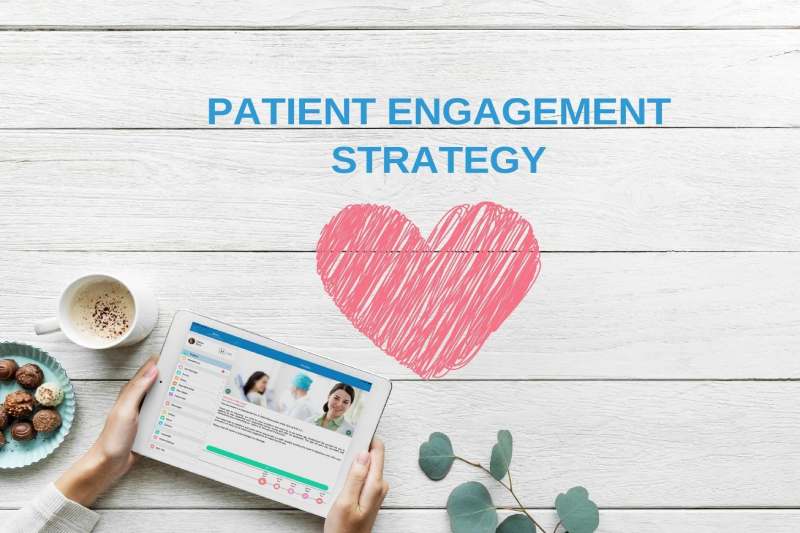Health
Eight Powerful Techniques to Raise Patient Involvement and Boost Medical Results

Patient engagement is an important component of healthcare that has a big impact on provider satisfaction and healthcare outcomes. In addition to adding to the workload and stress of healthcare providers, disengaged patients also put them at a greater disadvantage. Fortunately, there is good news: this risk factor can be changed. Through the application of efficient tactics, healthcare professionals can encourage patient involvement, initiating a favorable cycle of enhanced health results and heightened provider contentment. This article examines eight useful suggestions that can assist in reaching this objective.
Relationship Power between Patients and Providers
Improving patient engagement begins with fostering a strong relationship between the patient and the provider. By being actively involved in the patient’s healthcare journey and communicating with compassion, providers can cultivate these relationships. This entails being aware of the needs of the patients, paying attention to their worries, and quickly and effectively answering their questions.
Using Technology to Improve Communication
Providers now have a variety of tools at their disposal to streamline patient communication thanks to technological advancements. By utilizing telemedicine services, text message reminders, and electronic health records, clinicians can improve patient engagement by ensuring consistent patient interaction. These tools help with self-management of chronic conditions and treatment plan adherence in addition to facilitating more convenient communication.
Encouraging Patient Education
Providing patients with information about their medical conditions and available treatments is another practical strategy to boost involvement. In order to spread knowledge, providers can run workshops, provide instructional materials, and employ digital media. Patients are better able to make educated decisions about their healthcare and are more involved in the course of treatment as a result.
Early Identification of Patients at Risk
Encouraging patient engagement can be greatly increased by early identification of at-risk patients. Predictive analytics and other data-driven tools can help providers identify patients who may be at risk of poor health outcomes or disengagement. Upon identification, these patients can receive additional support and tailored care plans to increase their level of engagement.
Automating Procedures for Patient Engagement
Patient engagement can be enhanced by streamlining the healthcare experience for patients through automated processes such as medication reminders, appointment scheduling, and health tracking. These procedures are more efficient thanks to automation, which also lowers the possibility of mistakes and oversights.
Enhancing the Experience for Patients
The patient journey begins prior to the visit and continues through the phases of aftercare and payment collection. Providing patients with a seamless and trouble-free experience can help providers greatly increase patient engagement. This entails giving precise appointment instructions, presenting flexible payment alternatives, and guaranteeing prompt follow-up care.
Improving Gratitude
Technology can significantly improve patients’ ability to manage their own care. Patients can manage their medication, keep track of their health metrics, and stay informed about their conditions with the use of mobile apps and online platforms. This enhances patient involvement and produces better medical results.
In summary
In conclusion, patient involvement is an essential component of healthcare that has the potential to greatly enhance both provider satisfaction and health outcomes. Providers can create a positive cycle of patient activation and better outcomes by establishing strong relationships with their patients, using technology for communication, promoting patient education, early identification of at-risk patients, and automating patient engagement processes. Now is the moment to advance patient involvement and see the revolution it can bring about in the medical field.
-

 Business3 weeks ago
Business3 weeks agoNayef Doleh Examines International Humanitarian Fundraising Strategies
-

 Business3 weeks ago
Business3 weeks agoHow to fill MSME Form 1? Step-by-Step Guide
-

 Business4 weeks ago
Business4 weeks agoHow Black Banx is Redefining Global Banking Strategies in 2025
-

 Education4 weeks ago
Education4 weeks agoSchool Of Odd Thinkers – Think Odd, Learn a lot, and Earn a lot
-

 Festivals & Events3 weeks ago
Festivals & Events3 weeks agoInteresting Facts about St. Patrick’s Day
-

 Tech4 weeks ago
Tech4 weeks agoMicrosoft Teams to End SMS Messaging Feature Support for Android Phones and Switch to Phone Link App as Alternative
-

 Education4 weeks ago
Education4 weeks agoJeffrey Laino Offers a Close Look at Literary Analysis Implementation
-
Business3 weeks ago
From Marine to Chief: The Leadership Journey of Sean Mannix













